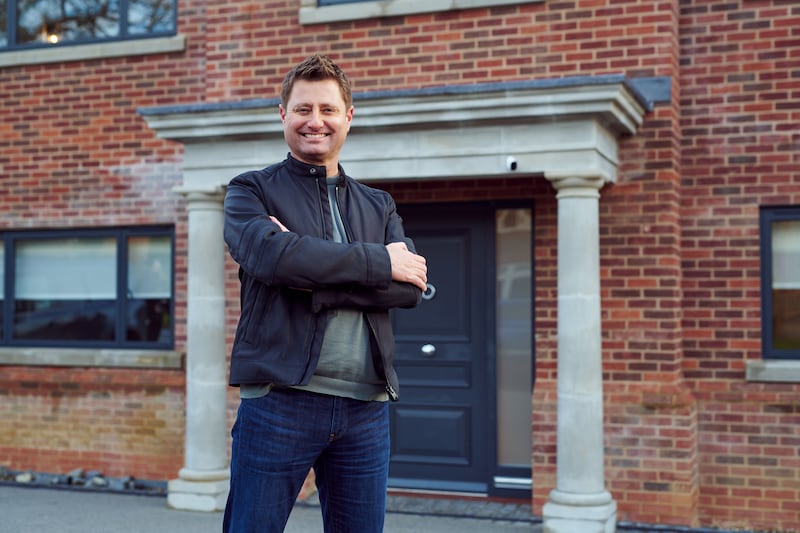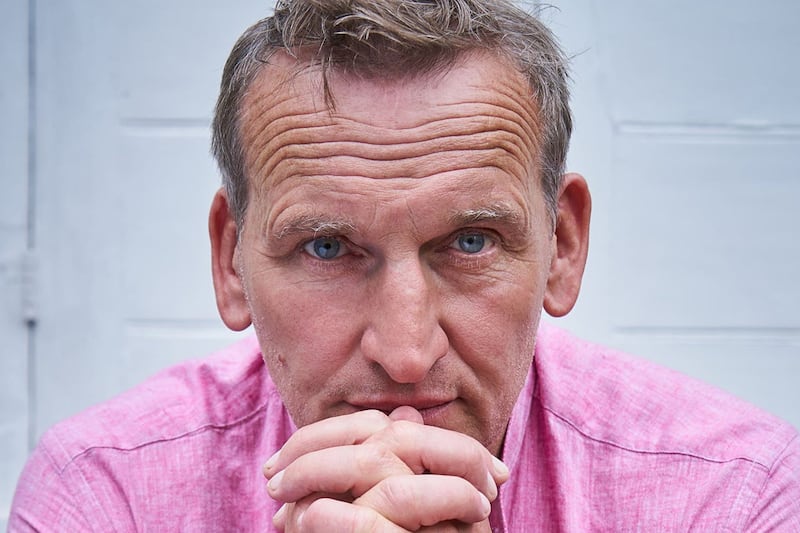We should never forget the fundamentals of homes, he stresses – they need to be warm, comfortable, and safe.
Clarke, the presenter of shows including George Clarke’s Amazing Spaces and Old House New Home, says: “Obviously, it’s all about saving energy and reducing bills at the moment, and part of that is being sustainable for the planet. But there’s also something that people don’t talk about enough, and that’s being comfortable and warm and protected in your house. That feels great.”
Here are Clarke’s tips for keeping sustainably warm and safe in your home – and saving money where you can…
Insulation is key
Clarke stresses that insulation is the best thing to keep your house warm. “Make sure your loft’s really well insulated, and get rid of draughts,” he advises. “I still go into people’s houses and I cannot believe how draughty some of them are – they haven’t put draught excluders on doors or keyholes. On a windy day, the wind that comes through a keyhole is unbelievable.”
As well as getting rid of gaps around windows and doors, and insulating the loft, Clarke says wall insulation is definitely worth considering too.
He says his company installs a lot of dry lining, where internal surfaces are clad with plasterboard to provide an extra layer of insulation. “You’re literally building two or three inches of insulation on the interior of your house,” he explains. “You’ve got to be careful about how destructive it is to the house, because taking three inches off every wall makes every room feel a little bit smaller. It’s not the easiest thing to do, but my God, the difference it makes is unbelievable.”
Keen to practice what he preaches, Clarke has had his own home in London dry lined, as well as having it triple-glazed. “I’ve gone the full hog with ecological upgrades,” he says proudly.
Replace your boiler with a heat pump
Clarke has also changed his gas boiler for an air source heat pump, which he describes as “phenomenal”. But he’s making no claims they’re an affordable option – although over the long-term, the heat pumps can save a lot of money on bills, and they’re far more environmentally-friendly than standard boilers.
“One of the best things I’ve ever put in is an air source heat pump,” he declares. “So, I’ve got rid of my gas boiler – I’m not gas-dependent at all.
“These heat pumps aren’t cheap, so you can’t say they’re affordable. If you want to replace a gas boiler it’s going to cost you a couple of grand, but when you put an air source heat pump in, you’re changing a lot of the system, and the average cost is £6,000-£8,000, depending on the size of your house.”
He says homes need to be well-insulated for the heat pumps, which are powered by electricity, to work well. Clarke buys his power from a renewable energy supplier, and points out: “I know I’ve got clean, green technology providing all the heating and hot water for my house.
“My bills are definitely down, it’s amazing – they’re 30-40 per cent less than they’d normally be. That’s a decent saving every year, but you’ve got to buy the kit. People are struggling to pay for expensive food and travel costs, so it might be a big ask.
“If you’ve had a standard gas boiler in your house for 12-15 years, it’s probably very inefficient and needs to be taken out and upgraded,” he says. “But I would suggest, if anyone can afford it, do not replace your gas boiler with another gas boiler, and if you can, put in an air source heat pump. Really take a long-term view on it.”
Make sustainable energy - and money-saving changes
“Change your lifestyle and the way you live in your house a little bit,” suggests Clarke. “Things like turning your boiler down by one or two degrees – when I was a kid, my nanna and grandad used to say, ‘Just put an extra jumper on’.”
He says boiling a kettle is one of the most energy-consuming things in the house, and advises: “If you want one cup of tea, just boil one cup of water in the kettle. But we never do that, do we? We fill it up to the top.”
He suggests trying to use less water at home, too, and points out: “Showers use a huge amount less water than baths. That’s going to make a difference.”
Camera security
As well as keeping warm and cosy in your home, Clarke stresses how important it is to feel safe there, and he’s had security cameras installed at his house. “Back in the day, you might put up a security light that would go on if someone walked past, and you might have a home alarm. But technology has come on so much over the last 10 years, and now there’s very high resolution cameras,” he says.
“These cameras can see what people look like, as long as they haven’t hidden their face, and they activate your phone, so if you’re not at home, as soon as it detects something, it calls you. You can see the images on your screen and even talk to the burglar if you want to.
“So, you can be alerted no matter where you are that someone’s just approaching your house, never mind getting into it.
“Any steps you can take to put people off burgling your house are important. I’ve got security cameras because I don’t want anybody getting in, it’s as simple as that.”
He says standard security lights are also a good idea, and timer switches on lights. “These are good, low-cost things you can do,” he says. “And you just cannot beat really good locks. At the end of the day, if someone really wants to get in, they’ll get in. You’ve just got to make it as difficult as possible for them to do that.”
George Clarke has partnered with smart-home security brand Arlo (arlo.com/en_gb) to help homeowners keep their properties secure through DIY connected security cameras.








